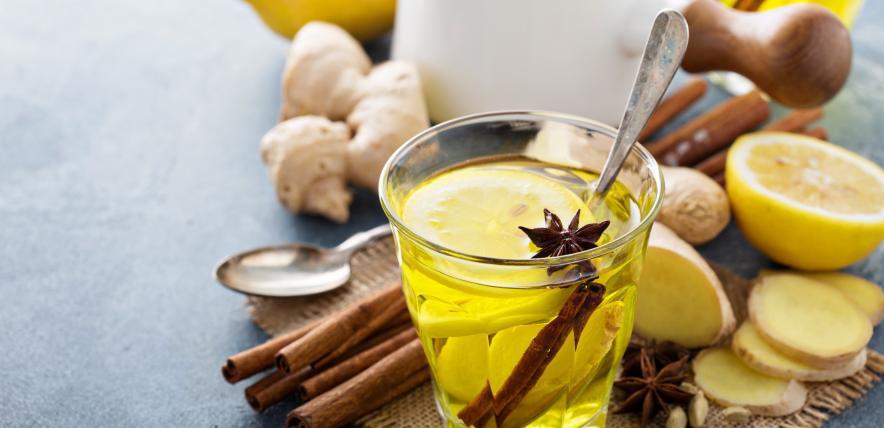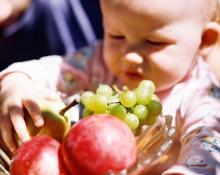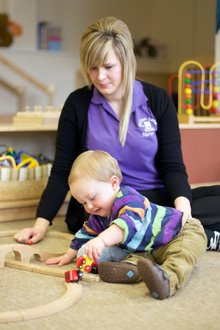This article is for informational and educational purposes only. It should not be used in place of medical advice. If you are concerned about your child, consult a medical professional.
When your child is poorly your first instinct is to seek medical advice at the earliest opportunity and to ensure they are taking any medicines prescribed.
But there will also be times when you want a quick remedy while the medicines take their effect – or because your child’s condition isn’t so bad that it requires a trip to the GP or pharmacist.
This is the time to consider natural remedies - ‘medical’ hacks that have been handed down in families from one generation to the next - that will soothe your little one and take the edge off any pain or discomfort. These are the ‘medicines’ our forebears would have used before modern pharmaceuticals became part of our everyday lives, and it is all too easy now to forget how effective they can be.
So, what you can use that is already in your fridge or kitchen cupboard?
Honey and lemon
This age-old remedy is known to sooth sore throats arising from colds, hay fever or an infection. Of course, in severe cases, you may need conventional medicines, but for a quick fix try squeezing the juice of half a lemon into some warm water and add a teaspoon or two of honey. Remember that this won’t be suitable for babies under the age of one, due to the natural bacteria contained in honey, but for a slightly older child it could lead to a restful night’s sleep which the pain might otherwise have made impossible.
Bicarbonate of soda (sodium bicarbonate)
This household staple has a myriad of uses from cake baking to cleaning the washing machine. Often known simply as bicarb, it is effective at getting rid of the smell of sick from clothes, furniture and bedding as it neutralises the stomach acid that causes the smell. Just dissolve several spoonfuls in water and use it to clean any affected fabric. However, claims that it can help alleviate the pain and swelling of bee stings are unproven and the NHS website now warns against using sodium bicarbonate as a remedy.
Olive oil or coconut oil
Both olive and coconut oil are safe to use, even on babies, and are a natural moisturiser or massage oil. Gently rubbing a few drops of olive oil on a baby’s head can help to ‘soak’ and dislodge the crusty patches of cradle cap as well, if not better than, a shampoo designed for the purpose. Coconut oil, the new ‘in thing’ in kitchen cupboards, often looks more like a solid cream than a fluid, but it melts at body temperature and so can be easily rubbed into the skin.
Steam
Humidity is your friend when babies and toddlers are poorly with a cold or cough, and steam can ease these troublesome symptoms. Close the windows and door to the bathroom and turn the shower to hot, allowing your child to breathe in the steam. It can help to clear their nose and sinuses and make coughing more productive.
Cabbage leaves
If your child takes a tumble, a cabbage leaf cooled in the fridge – dark green English variety is said to be best – is a natural remedy for bruises and swelling. Scrunch the leaf slightly to release the juice and pop it over the bruised or swollen area.
Cooled, boiled water
The “hardy perennial” of natural remedies, cooled boiled water can help to relieve a whole range of ailments, from an upset tummy to cleansing gunked-up eyes. It is a simple, but safe and effective. Make sure that, whether you are giving it as a drink, or to clean any part of the body, it has been allowed to cool to a safe temperature.
Garlic
Love it or hate it, garlic has known health and healing properties. Here is one remedy that has been handed down in my family: you need a clean jar with a lid, a small onion, a clove or two of garlic and some honey. Slice the onion and garlic thinly and layer alternately in the jar: onion, garlic, spoonful of honey and so on, in any order. Cover with the lid and leave in a warm place, such as the ledge over a radiator, for an hour or two or until the juice from the onion and garlic combine with the honey in the bottom of the jar. Extract the juice with a teaspoon and give to your child, a little at a time. It’s not everyone’s cup of tea, and it isn’t suitable for babies as the taste can be a little strong, but the syrup will immediately soothe a sore throat and can help to fight an infection.
As ever, though, if your child is showing persistent symptoms and you’re worried, then seek medical advice. You know your child best.
Written for the Early Years Alliance by Dorothy Lepkowska.







